The Water We Want 2025 - All Other Media
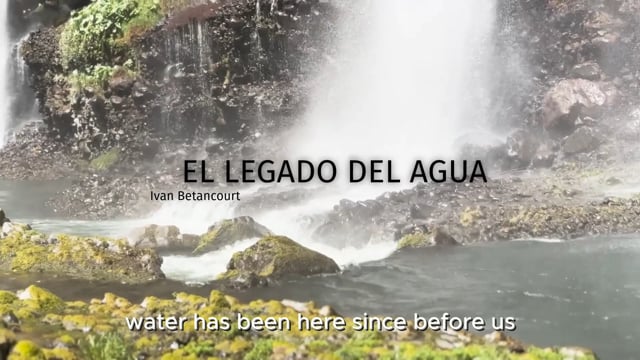
Identifier: #119

MEXICO
Iurhekua Interactive Water Museum
The legacy of water
Iurhekua Interactive Water Museum, Mexico. MONTRER UNIVERSITY, URUAPAN MICHOACAN. Ivan Betancourt.
The Legacy of Water is a visual and narrative journey through the rivers, lakes, and springs of Mexico, exploring their vital role in biodiversity, culture and the future of our planet. From the ecosistems that depend on water to the threats posed by climate change, the video highlights the deep connection between water and the communities that have revered it for centuries. Through testimonies from experts and local inhabitants, it presents both the challenges and the solutions, reminding us that the future of water is in our hands.
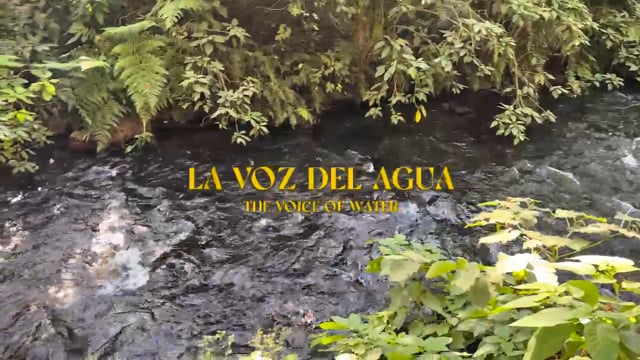
Identifier: #118

MEXICO
Iurhekua Interactive Water Museum
The voice of water
Iurhekua Interactive Water Museum, Mexico. ICEP. URUAPAN MICHOACAN. Samady Guadalupe Gómez Pérez.
Is a short film about how pollution and waste harm water. Throug videos of clean and dirty wáter. The water tells its own story, explaining how it has been essential for life, but now suffers from contamination. Its purity contrasts with its decline. The final message seeks to raise awareness and encourage people to protect this vital resource before its too late.
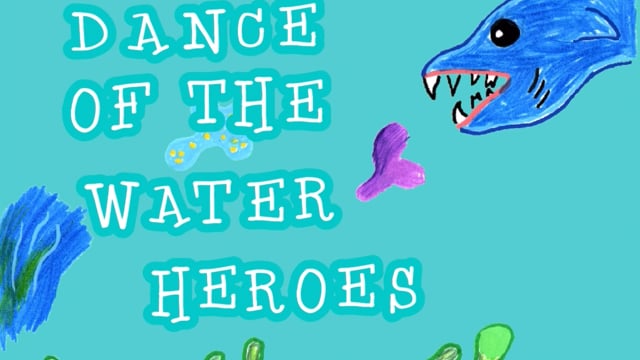
Identifier: #113

SLOVENIA
Posavje Museum Brežice
Dance of the water heroes
Posavje Museum Brežice, Slovenia. Osnovna šola Sava Kladnika Sevnica, Sevnica. Classroom.
Our project explores the hidden world of microorganisms, which are essential for clean and healthy freshwater environments. We focused on the micro-water world – the invisible yet indispensable inhabitants of rivers and lakes that maintain the ecosystem's balance. We are students attending the computer science course at our school in Sevnica, Slovenia. We illustrated various microorganisms, such as green algae, diatoms, and amoebas, and their underwater environments. After digitally processing the images, we uploaded the drawings on Scratch platform, where we animated the microorganisms to dance and move within their natural habitat, contributing to the vitality of our waters. With this project, we aim to highlight the crucial role microorganisms play in keeping water clean. Their activity is like nature's dance – constantly filtering water, producing oxygen, and enabling the survival of larger aquatic organisms. We want to inspire reflection on how we can contribute to preserving these delicate ecosystems through respect for nature and sustainable practices. This is the creative way we tell the story of the water we wish for.
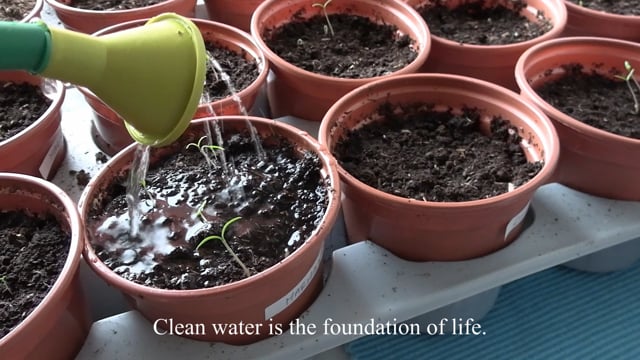
Identifier: #108

CROATIA
Aquatika – Freshwater Aquarium Karlovac, Croatia.
Voda (Water)
Aquatika, Croatia. Cinema Club Karlovac, Karlovac. Noa Barić, Katarina Katić.
Water, the most important resource for all living beings. It covers 70% of planet Earth, yet only 2.5 % of it is fresh water. But is that 2.5 % enough for humanity? What kind of water do people want? The film mentions real-life people and the water issues they wish to solve, such as the availability of water in the village, a clean river to swim in, unpolluted water near domestic animals and fish, and clean water in the household. What should and could we do to preserve water, the home of countless living creatures?
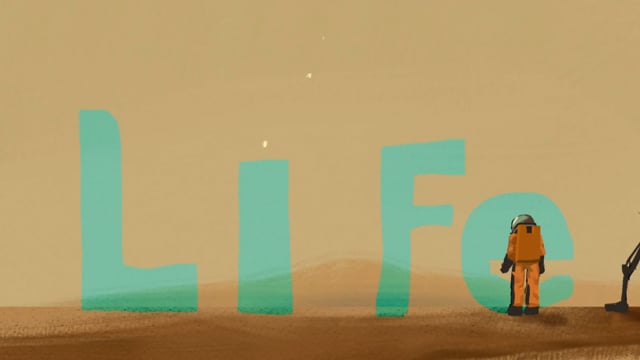
Identifier: #104

BRAZIL
Brazilian Water Museum
Life
Brazilian Water Museum, Brazil. State School Manoel Vicente Souza/ Augustinópolis, Tocantins. Estevão Wendel.
In the video, water is portrayed as fundamental to the existence of life in all its diversity. As such, protecting it should not be an individual responsibility, but a collective effort toward a better future for everyone.

Identifier: #123

ROMANIA
Aquatim, Water Museum Timisoara
Lake Bucura in the Retezat Mountain
Aquatim, Water Museum, Romania. Theoretical Highschool I. C. Bratianu, Hațeg. Daria Silvia Grigoriu.
This collage presents, in the foreground, the image of the largest glacial lake in Romania, followed by a succession of hills, plateaus and plains. It is a digital artistic creation.
The collage was created using a large-scale process, using pieces cut from several images and a reference photo of Lake Bucura in the Retezat Mountains. Thus, each image went through three stages: the first stage was identifying color-matched images of the landscape, the second stage was cropping the images in any shape and form, and the third stage was placing it into another white image in such a way that it matched both color-wise and as position is concerned with the rest of the pieces.

Identifier: #116

CHINA
National Water Museum of China
The pulse of rivers — The Qiantang River tidal trees
National Water Museum of China, China. Zhejiang Medical Technology School, Hangzhou. Gao Yucheng.
The Qiantang River tidal trees, shaped by the powerful tides of the mother river of Zhejiang province — the Qiantang River, show nature's rhythm and life's strength. These tide-made channels in the mudflats tell the story of how land and river tidal meet each day. This photo captures water-carved marks on their "trunks" and their glow under the sun, revealing both their beauty and their fight to survive in the tough tidal zone. This wonder of nature makes us think about protecting our planet and the unyielding power of life.

Identifier: #129
Morocco
Museum of Water Civilization, Morocco.
Humans appreciate water's value only when it's gone
High School El jadida, Ait ourir. Khadija Abou Ali.
A person does not know the value of water until it is lost. The earth that brings us together means that the responsibility to preserve water belongs to everyone. The splitting of the earth into two halves represents the spilling of water, indicating the excessive consumption of this vital resource and humanity's inability to stop the leak. The sad woman and the background color highlight all the negatives, such as drought, diseases, and epidemics. In the end, the artwork calls for the preservation of water.
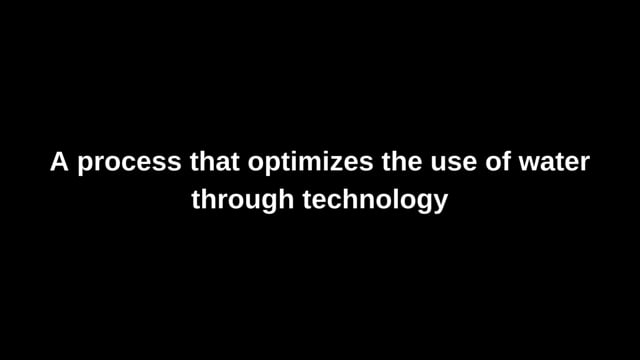
Identifier: #128
Morocco
Museum of Water Civilization, Morocco.
Smart Aman
The Anglo School by ELARAKI International School of Morocco. Elyas Brakez.
The project focuses on Smart Aman, an innovative concept designed to reduce water consumption, communicated through storytelling and digital media. The story follows Elyas, a young animated character who discovers the problem of water scarcity. Inspired by this challenge, he embarks on a journey to create a solution aimed at decreasing water use in Hammams, which he called Smart Aman.

Identifier: #127
Morocco
Museum of Water Civilization, Morocco.
Water in a Nutshell
Hilali Targa International School, Marrakech. Mohamed Jad Aissouni.
As a species, water is the most important resource we have, and we must do our best to conserve it. But what is nature's way of preserving water? What other secrets does water hold? To answer these questions, I made a short video with animation to clearly understand the concept. Made with Premiere Pro, Photopea and Geometry Dash for particles.
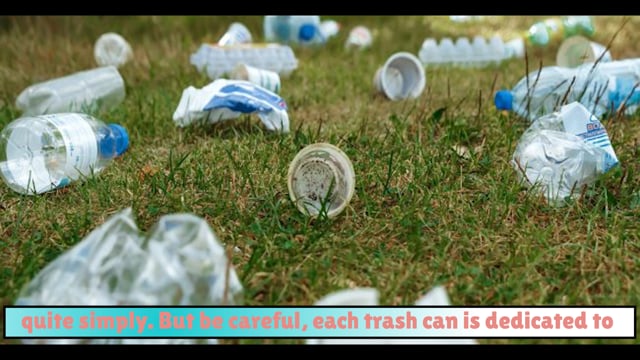
Identifier: #126
Morocco
Museum of Water Civilization, Morocco.
The Importance of Water
Hilali Targa International School, Marrakech. Yassine El Khalkhali.
My project talks about the importance of water in our life. Why is water important? And how can we avoid wasting water to live in a better world? These are the topics of my video. In the first part, I imagined a story that talks about the diversity of water before, where I answered the first question. In the second part, I give advice to save water and avoid wasting it. We must save water, because it's the most important resource in our life to stay alive. We can't stay without drinking water, even for one hour. This is why I created this project.

Identifier: #122
SPAIN
Museos de Mequinenza
Water in reverse
Museos de Mequinenza, Spain. Centro de FP "Santa Agatoclia", Mequinenza. Hamza Moustane.
This image of a water fountain flipped upside down makes us think about how we see water. We often take it for granted, but water is essential for life, and we need to start looking at it differently. By turning the image around, I want to show that we have to change our perspective on water and the way we use it. Water is not something we can just waste - it's a limited resource that needs our care.

Identifier: #121
SPAIN
Museos de Mequinenza
Serene reflection, human impact
Museos de Mequinenza, Spain. Centro de FP "Santa Agatoclia", Mequinenza. Nabil Kdadri.
My photo reminds us of the importance of keeping water clean and protected. The river, once clear and beautiful, could easily be damaged by pollution or waste. The tire in the photo shows how even things we leave behind can affect nature in ways we don't always see. This image makes me think about how we need to take better care of our water sources, so that we can keep enjoying natural places like this without damaging them for the young generations.

Identifier: #120
SPAIN
Museos de Mequinenza
The drought's footprint
Museos de Mequinenza, Spain. Centro de FP "Santa Agatoclia", Mequinenza. Djibi Diallo.
The Drought's Footprint shows an image of the sunrise over the Segre river, that looks very different due to drought. The water, which is normally close to the shore, is now much farther away, leaving a dry canal in the earth that was once covered by water.. This photo aims to show how drought affects us, leaving visible traces of how nature is impacted. It's a reminder of how important it is to take care of our rivers and think about how we can help prevent these situations from getting worse.
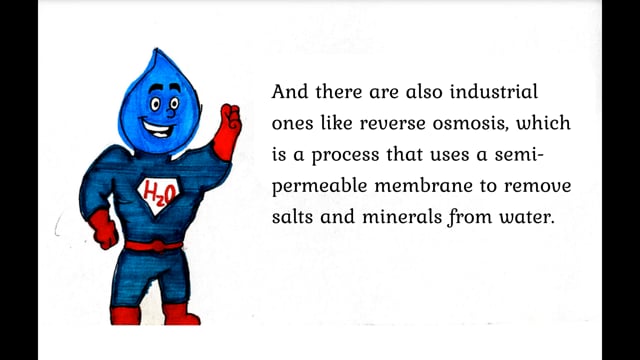
Identifier: #117
MEXICO
Iurhekua Interactive Water Museum
H20 Man
Iurhekua Interactive Water Museum, Mexico. COLEGIO MANO AMIGA, QUERETARO. Carlos Sanitago Silva Boyzo.
The video is about a Little, dirty and lost drop of water who ask for help to a superhero “H2O Man”; The superhero provides help and guides the droplet with alternatives to be purificated and become potable.

Identifier: #115
CHINA
National Water Museum of China
The journey of water and time
National Water Museum of China, China. Hangzhou Xiaoshan No.2 Vocational School, Hangzhou. Pan Xinyi.
This film follows the journey of a stray cat, guiding viewers into a world gradually losing its color. The dark, oppressive imagery at the beginning symbolizes the heavy cost of neglecting hydraulic heritage and damaging the water ecosystem: rivers dry up, land cracks open, and life falls silent. Amidst this silence stands Dujiangyan, an ancient hydraulic marvel that has quietly endured. When humanity awakens and begins to protect this precious heritage, the world slowly comes back to life. Green returns, and vitality reemerges. Through striking visual contrasts and emotional resonance, the film calls for refreshing water resources and highlights the symbiotic relationship between water and human civilization. Only by respecting nature, inheriting ancient wisdom, and pursuing sustainable development can we safeguard our shared future. "Every drop of water is the lifeblood of civilization; every hydraulic heritage is a monument etched by time. To protect them is not only a reflection on history, but also a solemn pledge to the future.

Identifier: #114
CHINA
National Water Museum of China
Protecting aquatic ecology
National Water Museum of China, China. Hangzhou Yungu School, Hangzhou. Emma Ma.
The upper part of my work depicts a clear river with many vibrant aquatic creatures, while the lower part is severely polluted due to littering, with fish already dead. My purpose through this poster is to call on the world to protect the environment and cherish water sources.

Identifier: #112
PORTUGAL
Lisbon Water Museum
In the rhythm of the water
Lisbon Water Museum, Portugal. Escola Secundária de Felgueiras, Felgueiras. 8thB grade – class A.
The song is a passionate call for environmental awareness, emphasising the fundamental importance of water as a cornerstone of life while denouncing its waste and pollution. Through vivid imagery that highlights the drying up of rivers and polluted seas, the song delivers an urgent message about the dwindling water resources and the detrimental impact on health and ecosystems. It advocates for a range of practical water saving measures, such as turning off taps, taking shorter showers, optimising watering times for plants, and collecting rainwater. Furthermore, the lyrics criticise the irresponsibility of industrial and governmental bodies, urging the enforcement of stricter regulations and accountability for those who pollute or squander this indispensable resource. The overall aim of the song is to galvanise both individuals and institutions into adopting sustainable practices, ensuring the conservation of water resources and securing a healthier, more balanced future for the planet.

Identifier: #111
PORTUGAL
Lisbon Water Museum
Watermix – Dance water 4
Lisbon Water Museum, Portugal. Escola Secundária Fernando Namora, Coimbra. Miguel Pires e Nelson Brízida.
The result of a premeditated idea, the work starts from a simple recording of a human stirring natural water in the basin of a lake. This theme aims to explore the sonic quality of water, so we first synthesised a kick (bassdrum), emulating the traditional 909 synthesisers used at the time. That's where the inspiration related to nineties Eurotrance came from. From there, with an atmosphere rich in reverb and sound effects, we used the recording itself as an operator of convolution reverb algorithms - widely used in this type of track. In the space of a couple of days, the music was mixed, and an introduction was added alluding to this theme. Although short, this project ultimately aims to diversify the works competing in this competition, further sensitising the public to the importance of water as part of the exploration of our passion, alongside the development of technical and creative skills.
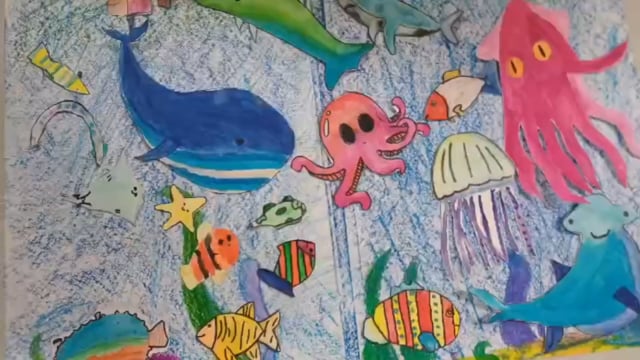
Identifier: #110
PORTUGAL
Lisbon Water Museum
Together for water: A gesture for life
Lisbon Water Museum, Portugal. Academia de Música de Costa Cabral, Porto. 5th grade class A (24 students).
The stop-motion animation “Together for Water: A Gesture for Life” portrays a community-led cleanup of a lake and the surrounding river beach. With the participation of volunteers, it was possible to remove the waste polluting these areas, promote water quality, and help restore the biodiversity of the natural environment. Through powerful visuals and moments of cooperation, the video emphasizes the importance of caring for our water resources and the transformative power of collective action. This initiative symbolizes hope for a cleaner, more sustainable, and nature-connected future.
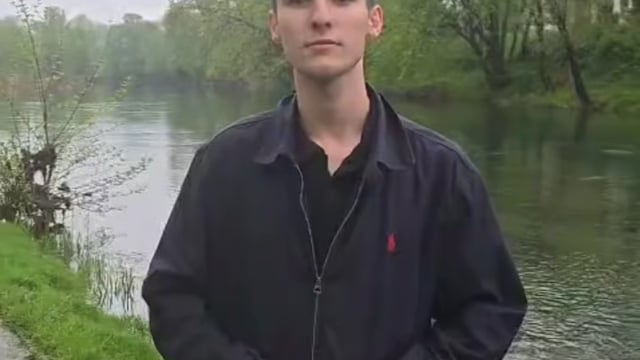
Identifier: #109
CROATIA
Aquatika – Freshwater Aquarium Karlovac, Croatia.
4 Rivers, 1 Message
Aquatika, Croatia. Forestry and Carpentry School, Karlovac. 2. M.
The video "4 rivers, 1 message: Let's Protect Freshwater!" was created to show that our rivers - Kupa, Korana, Mrežnica, and Dobra - are more than water: they are life, the future, and our responsibility. Through authentic footage and strong messages from participants, we raise awareness of the importance of preserving natural beauty and warn about the threats of pollution. Each river has its own story, and together they send one message: the water we want must be clean, safe, and respected. Our project is a call to action - for current and future generations who deserve clean nature and a healthy environment.

Identifier: #107
ITALY
Autonomous Province of Trento
Water is life, saving it is a choice
Autonomous Province of Trento, Italy. Istituto Antonio Bresciani, Ala. IIB.
This is a game. Here are the rules:
1. The players can be split into groups.
2. They begin on the Start drop, take turns to roll the dice, and move their counter forward by the number of dots on the face of the dice.
3. The spaces 1, 2, 3, 4, 5, 6, 8, 9, 10, 11, 12, 13, 14, 16, 18, 20, 21, 22, 24, 25, 26, 27, 29 contain questions to answer correctly otherwise they go back to the space from which they have started.
4. If you land on spaces 7, 15, 23: miss a turn.
5. If you land on space 9 and you answer correctly: go up the river to space 19. 6. If you land on space 19: go down the river to space 9, without answering the question.
7. The space 17 doesn't contain any questions to answer.
8. If you land on space 28: go down the river to space 17.
9. You must land exactly on the 30 Globe to win.
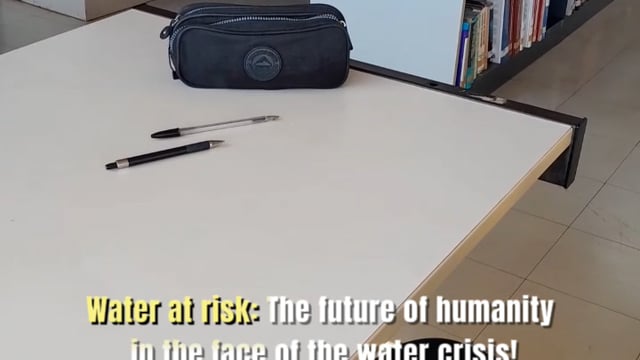
Identifier: #106
BRAZIL
Brazilian Water Museum
Water at risk
Brazilian Water Museum, Brazil. Federal University of São Carlos / São Carlos, São Paulo. Gabriela Poppi Osio.
Water at Risk is a creative and informative video that combines drawing, staging, and stop motion to address the global water crisis. The narrative starts with a provocation: what if drinking water became more valuable than oil? This video uses accessible language and highlights water's importance for life and maintaining ecosystems. Hand-drawn illustrations show its daily use and vital role in the functioning of the human body, while data and graphs reveal the severity of scarcity and waste worldwide. The water crisis is presented as a current and growing problem, aggravated by climate change, mismanagement, and excessive consumption. However, the production highlights real and inspiring solutions, such as water reuse, desalination, rainwater harvesting, and smart agriculture. With a handcrafted aesthetic and a reflective tone, the video ends with a clear message: "Without water, there is no life. Protecting this resource is protecting our future." It is a call for awareness and action, primarily aimed at young audiences and the educational environment.
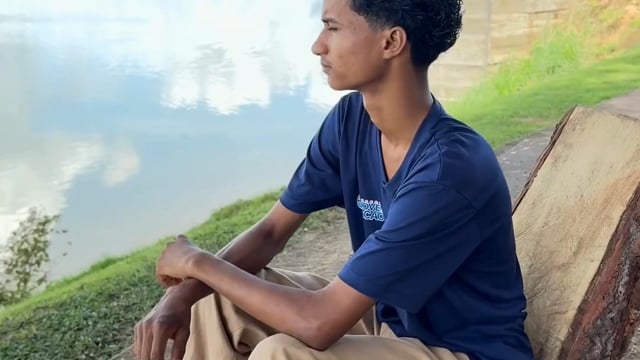
Identifier: #105
BRAZIL
Brazilian Water Museum
Water: Essence of life
Brazilian Water Museum, Brazil. State School Padrão/ Brejinho de Nazaré, Tocantins. Lucas Rodrigues das Neves.
The poem reflects on the importance of water for life on Earth, emphasizing its purity, serenity, and essential role in sustaining biodiversity. It describes the water cycle, from its source to its journey through rivers, lakes, and oceans, and highlights its significance for plant growth and the creation of joyful memories. At the same time, the poem issues a warning about the lack of protection and preservation of water, underscoring the need to care for this vital resource for the well-being of future generations. It concludes with an appeal for collective responsibility in safeguarding water and ensuring the continuity of life.

Identifier: #103
BRAZIL
Brazilian Water Museum
Treveling droplet
Brazilian Water Museum, Brazil. State School Adá de Assis Teixeira-CEAAT - Goiatins, Tocantins. Ana Julya Peres Pinheiro and Raul Cesar Pereira Tavares.
The poem, “Traveling Droplet,” talks about the importance of preserving and caring for the planet’s freshwater.
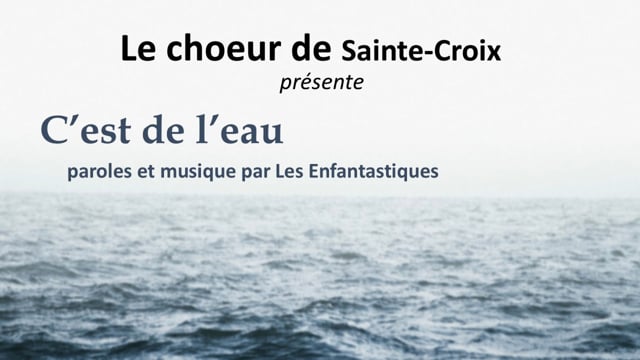
Identifier: #102
CANADA
Canadian Museum of Water
C'est de l'eau, by les enfantastiques
Canadian Museum of Water, Canada. École élémentaire catholique Sainte-Croix, Tiny, Ontario. Le Coeur de Sainte-Croix, school choir under the direction of Mme Alicia Lefaive
Listen to the pure and committed voices of our students from École élémentaire catholique Sainte-Croix, Tiny, Ontario, Canada, as they sing 'C'est de l'eau' (It's Water), a touching anthem by les Enfantastiques. This performance is an ode to the beauty and fragility of our planet, and a poignant reminder of the crucial importance of freshwater. Everything is water, water is life. Let yourself be carried away by their message of hope and action for a sustainable future.

Identifier: #100
INDIA
Living Waters Museum, India
These sweet tears
Living Waters Museum, India. Bidya Bharati Girls' High School, Kolkata. Anshika Utsav
“These Sweet Tears" is a poem that celebrates the beauty of rainfall. It is about how rainwater nourishes the earth, nurturing life and filling everyone with joy with its presence. It explores the forms of water, and how humans are slowly, but surely, polluting this beautiful gift of life we've gotten. Through animals and nature, it elaborates the stages of water, and the necessity of water and how important it is to humans in many forms - to drink, and for worship; however, for animals, it's just a source of life, which humans are polluting. This poem explores this settlement only, loss of water, the late human realization of his actions and the consequences everyone has to face.

Identifier: #99
INDIA
Living Waters Museum, India
A weeping sky: Study of precipitation
Living Waters Museum, India. Bidya Bharati Girls' High School, Kolkata. Mouli Sarkar
"A weeping sky" represents the vital yet often-overlooked process of precipitation. This atmospheric phenomenon, far from simply being rain, snow, or hail, is part of a complex hydrological cycle that is crucial to life on Earth.
The process begins with evaporation, lifting water vapor into the atmosphere. As this vapor rises, it cools and condenses around microscopic particles, forming clouds. These clouds, composed of countless water droplets or ice crystals, grow heavier until gravity overcomes the upward air currents, leading to precipitation.
The type of precipitation depends on atmospheric temperature. Warm air produces rain, while colder temperatures result in snow or hail, each with unique characteristics and impacts.
Precipitation replenishes freshwater sources, sustains ecosystems, and influences global weather patterns. Understanding its intricacies from cloud formation to ground impact—is vital for managing water resources, predicting weather events, and ultimately contributing to human survival and environmental sustainability.
The weeping sky, therefore, is not merely a picturesque scene; it is a fundamental process sustaining life.
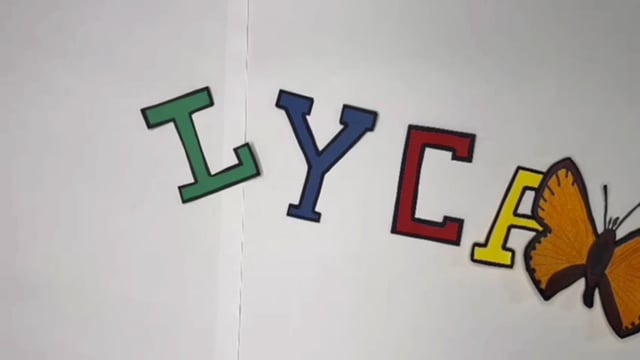
Identifier: #125
ITALY
Water Museum of Venice
The butterfly
Water Museum of Venice, Italy. IIS Levi Ponti, Venice. 4^ Healthcare Biotechnologies
The video describes the environmental problem of eutrophication, which occurs when a body of water receives an excess of nutrients, mainly nitrogen and phosphorus. A graph is shown illustrating the capacity to reduce the concentration of Escherichia coli between the water entering the oasis and the water leaving it. These data were determined by students of the IIS Levi-Ponti within a ten year collaborative project with the Consortium Acque Risorgive for the reclamation of spring waters of Venice aimed at monitoring the phytodepurative capacity of the Lycaena Oasis of Salzano. The video shows the magical role of nature capable of purifying water and the curiosity of the students (little scientists) who discover and investigate the mechanisms hidden from simple observation.
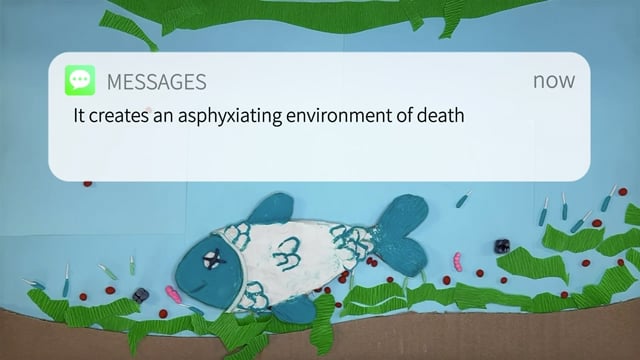
Identifier: #124
ITALY
Water Museum of Venice
Eutrophication
Water Museum of Venice, Italy. IIS Levi Ponti, Venice. 3^ Environmental Biotechnologies
The video describes the environmental problem of eutrophication, which occurs when a body of water receives an excess of nutrients, mainly nitrogen and phosphorus. In the first part of the video, the main phases of the process are outlined using the stop motion technique: sources of pollution, algal growth, development of aerobic and anaerobic bacteria, creation of an oxygen-free environment and death of aquatic organisms. In the second part, the use of wetlands is proposed as a possible solution to the eutrophication of watercourses. A graph is shown illustrating the capacity to reduce the concentration of Escherichia coli between the water entering the oasis and the water leaving it. These data were determined by students of the llS Levi-Ponti within a ten-year collaborative project with the Consortium Acque Risorgive far the reclamation of spring waters of Venice aimed at monitoring the phytodepurative capacity of the Lycaena Oasis of Salzano. The water leaving the Lycaena oasis flows into the Venice lagoon. Phytoremediation is therefore a solution compatible with Goal 14, "Life Below Water", of the 2030 Agenda which aims to conserve and sustainably use the oceans, seas and marine resources for sustainable development. All explanations in the video are social media style messages.
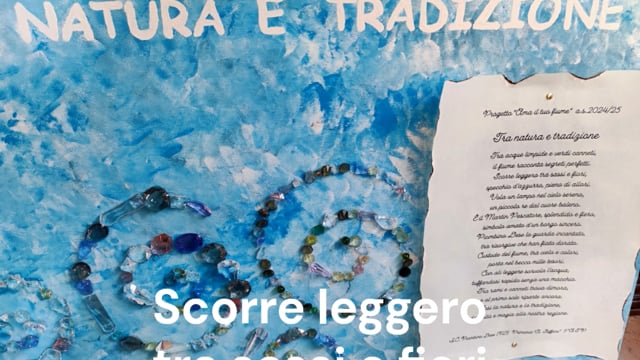
Identifier: #98
ITALY
Water Museum of Venice
Between nature and tradition
Water Museum of Venice, Italy. Primary school “Stiffoni” of Piombino Dese, Padua. 5^A
Through clear waters and reeds so green, the river whispers secrets unseen.
It flows so lightly past rocks and flowers, a blue reflection of nature’s powers.
A flash in the sky, so bright, so fleet, a tiny king with a heart that beats.
The kingfisher glows, so proud, so free, a cherished symbol for all to see.
Piombino Dese, in awe, stands still, where golden springs breathe calm and thrill.
Guardian of waters, of sky and shore, it carries treasures forevermore.
With wings so light, it skims the tide, diving swiftly with graceful pride.
Among the reeds, it finds its rest, then greets the sun on its next quest.
Thus nature and tradition unite, bringing our land beauty and light.
